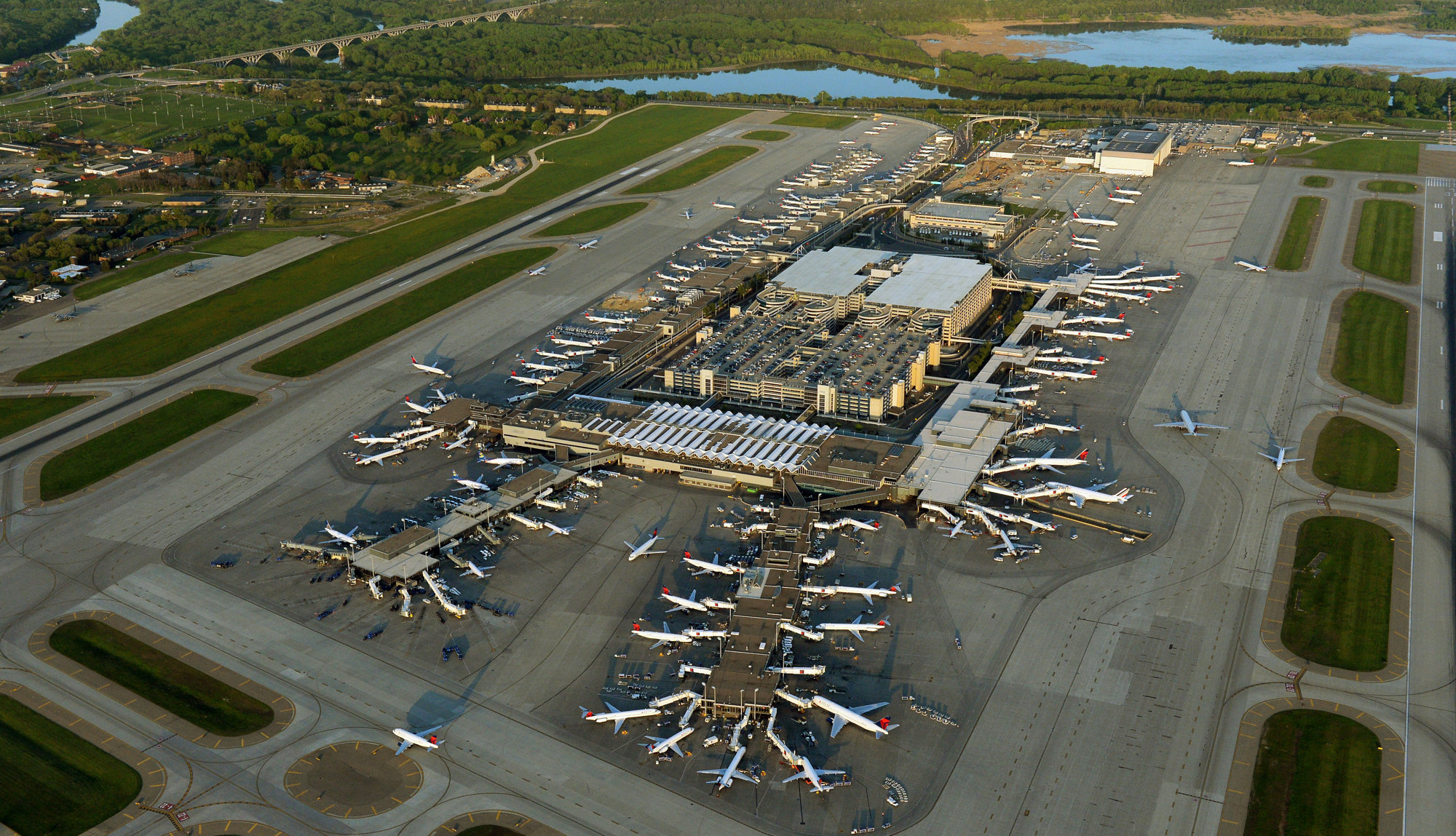Expansion
In its long history, Minneapolis-St Paul International Airport has gone through various transformations, from the 1st landing strip to the launch of passenger service, to changing its name, to the massive expansion that characterized the Sixties, including the construction of Lindbergh and Humphrey Terminals (Terminals One and Two)
Immediately after the Metropolitan Airports commission was established, they started planning the expansion of Wold-Chamberlain with the aim of making the Twin Cities a transport center. In 1944, Wold-chamberlain Field was renamed Minneapolis- St Paul Metropolitan Airport. In 1948, the word “International” replaced “Metropolitan” and the airfield became known as Minneapolis-St Paul International Airport
The construction of Terminal 1 or “Lindbergh Terminal as it was previously known, started in 1958 and took 4 years to complete. The six-hundred square foot, 24 gates, 2 concourse terminal was made open to the public in January 1963. The terminal was later expanded in 1971, 1972, and 1986. The last major expansion of the Lindbergh Terminal also marked the beginning of the construction of the Humphrey Terminal (Terminal 2).
When Terminal 1 was opened to the public, it was projected to serve 4 million travelers by the mid 1970’s. However, this projection underestimated passenger growth with the number of passengers exceeding 4 million as early as 1967. In the years that followed the increase of passengers continued to exceed projections. To tackle this issue, Minnesota lawmakers passed the 1989 Metropolitan Airport Planning Act, launching the Dual Track Airport Planning exercise. Conducted by the Metropolitan Council and Metropolitan Airport Commission, the 7-year planning exercise investigated options for offering required air service facilities and capacity for the area.
In 1996, the study was completed and the Metropolitan Airport Commission was directed by the Minnesota Legislature to implement Minneapolis-St Paul’s Long-Term Comprehensive Plan, offering slightly over three billion dollars in airport improvements at the current location. Virtually all aspects of Minneapolis-St Paul International Airport have changed since then with an unprecedented expansion of Terminal One, construction of Terminal Two, expansion of parking and roadways, creation of 2 computer-aided airport trams, and the incorporation of a light-rail system to connect Terminals One and Two to the downtowns of St. Paul and Minneapolis and the Mall of America.
Minneapolis-St Paul International Airport has continued to witness consistent growth in passenger traffic over the last two decades. In 2019, Minneapolis-St Paul International Airport served 39.5 million travelers. The unprecedented COVID-19 pandemic saw this number greatly reduced due to travel restrictions and safety precautions against the spread of the virus. However, as the Pandemic eases more people will begin to travel once more and the previous figures are likely to continue rising. Minneapolis-St Paul International Airport is planning to further expand both terminals and incorporate 15 more gates between them. As part of this plan, an additional five-thousand parking spot has been constructed at the airport, as well as a two-hundred-and-ninety room Inter Continental Hotel at Terminal One.
Minneapolis-St Paul International Airport’s rising success and sleek appearance combined with the region’s notorious winters made it the ideal place to shoot the 1970 movie Airport, starring Dean Martin and Burt Lancaster. In the same year, a company launched helicopter flights from Minneapolis-St Paul to downtown Minneapolis, Mankato, Rochester, and St. Cloud. However, the helicopter company ceased operations 4 months after the launch of the downtown Minneapolis route.
